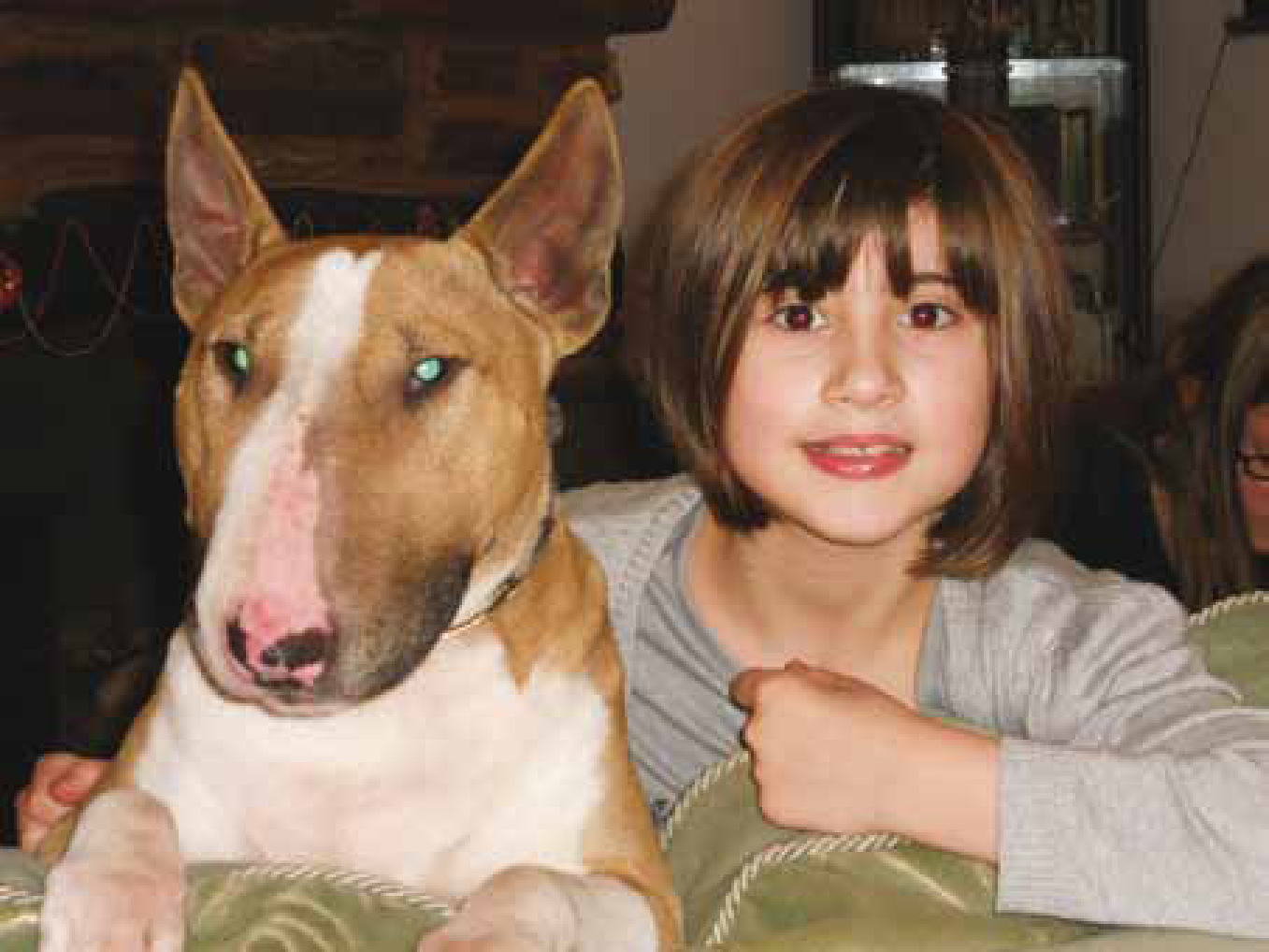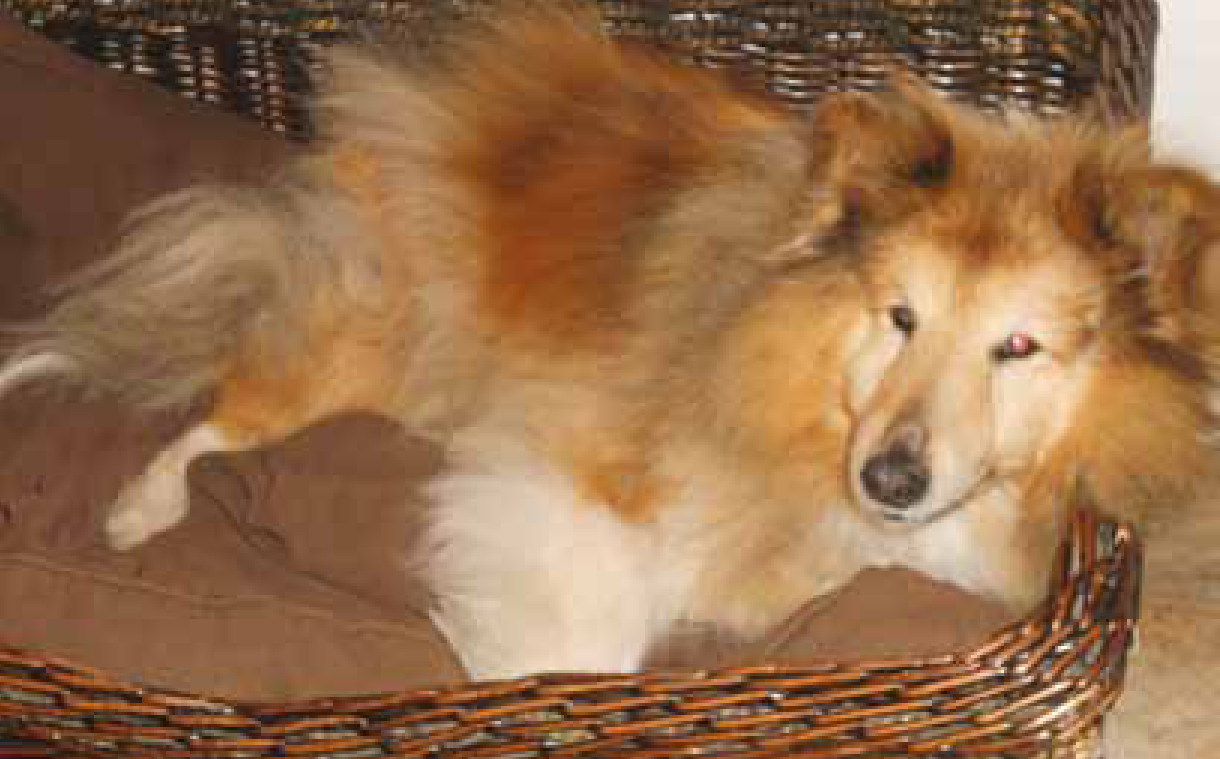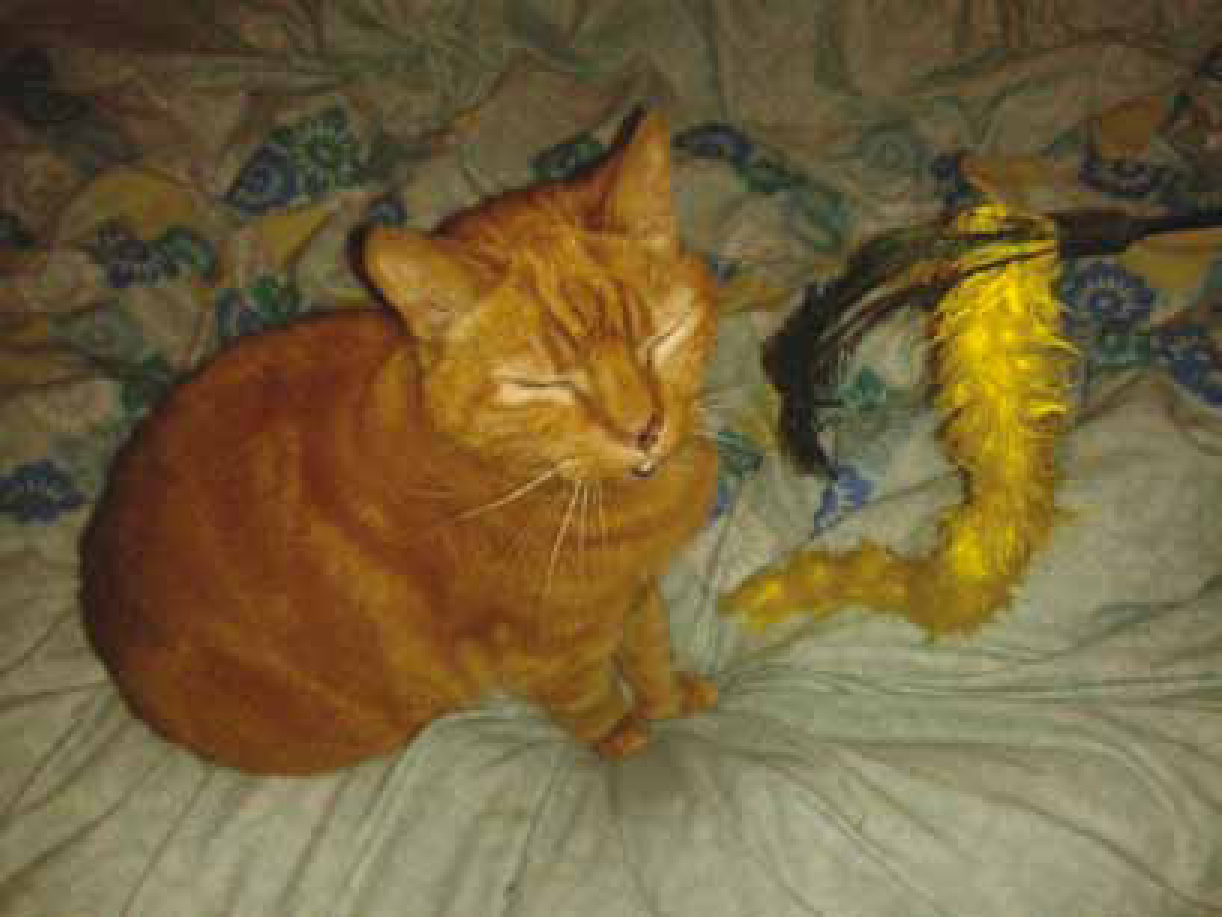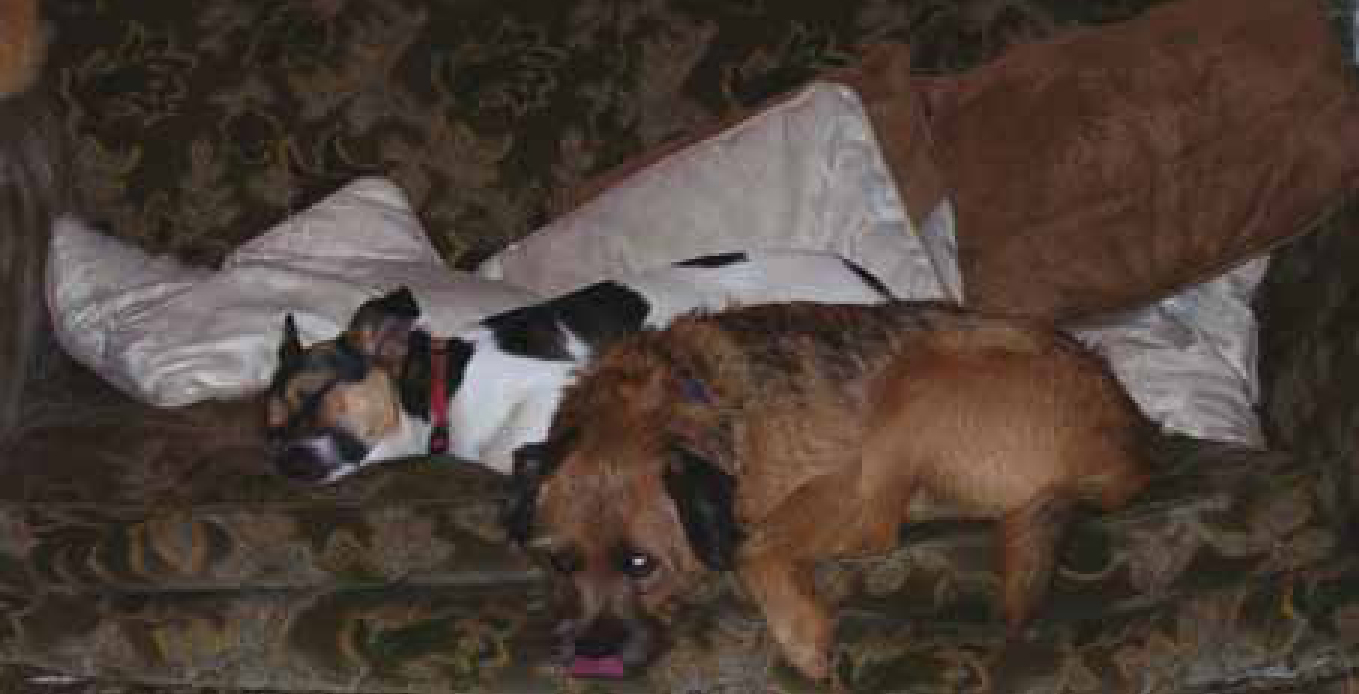Owners of ageing dogs and cats have a need for and a potential to benefit from many special services. Owners, however, seldom articulate or even recognise this and hence cannot obtain the services to meet such needs from their veterinary practice (Hancock et al, 2004). Puppy parties are now a regular service offered by veterinary practices, however it is essential that the same services are extended to pets at the other end of the age spectrum and that owners are educated about the needs of their senior pets. Many UK veterinary practices are building senior care programmes into their services and realising the professional satisfaction that comes from helping ageing animals live longer, healthier lives. Owners of ageing pets have long-standing bonds with their animals and as such, many of these owners are demanding high quality health care including senior and end of life care (Figure 1).

The more progressive veterinary practices are using senior care as a platform to address the growing demand for high quality palliative and hospice type care. Demographics suggest that increasing numbers of owners will, as a result of experience with human hospice care, demand and be attracted to veterinary practices that offer such services (Hancock et al, 2004; Shearer, 2011). A number of successful veterinary hospice programmes operate in America, perhaps the most notable one being the Pawspice programme led by Dr Alice Villalobos (see www.pawspice.com for details). While it is often not recognised as such, all veterinary personnel do provide both palliative care and basic hospice provision to patients on a daily basis. Patients with conditions such as chronic renal failure or congestive heart failure are often treated ‘palliatively’ for months to years via appropriate dietary and therapeutic management, without an expectation of a real ‘cure’. As stated, this treatment is often not recognised as palliative care however it is exactly this (Lindley and Watson, 2012).
Defining hospice and palliative care
The term hospice comes from the Latin word hospitium, which means to host. Hospice is defined as a facility or programme designed to provide a caring environment for supplying the physical and emotional needs of the terminally sick (Shearer, 2011). The term palliate comes from the Latin word palliare, which means to cloak or conceal. Palliate refers to alleviating symptoms without curing the underlying medical condition (Shearer, 2011).
Palliative care in veterinary medicine aims to address the treatment of pain and other symptoms in order to achieve the best quality of life for the patient. It also plays an important role in client support and education, helping owners to understand the disease process to facilitate informed decision making. Hospice care is an extension of palliative care that tends to patients that are nearing death. The foundation of both disciplines relies on a philosophy of care (Shearer, 2011). Put simply a philosophy of care is a framework of care goals and values that help owners make the best choices for their pet. Finding a philosophy of care is different for everyone. Some owners instinctively know what it is that they want their pet's care to involve; others require time and support to absorb the barrage of information that follows the diagnosis of a life-limiting condition. As such, one set approach to care does not fit all and veterinary personnel need to be adaptable and work with owners to create their own individual set of goals for them and their pet.
With human palliative and hospice care, a patient's doctor refers the person to the hospice, where doctors highly experienced in end-of-life care will advise on the care that is required. However, the situation is vastly different for veterinary surgeons as there is no specific animal hospice to which to make a referral. Thus veterinary personnel are forced to make the transition from the ‘cure’ state of mind to the ‘care’ approach (Hancock et al, 2004). Veterinary personnel obviously want to use their talent, knowledge and technology to save animals. McMillan (1998) described this as a difficult transition for veterinary personnel as they have to face a loss just as the owners of the animal do.
From cure to care — making the transition
The goal for a sick animal is always to restore comfort or eliminate discomfort. In the case of curable disease, the method for restoring comfort is to cure the disease. For noncurable but treatable diseases, comfort is restored via surgical, medical, or supportive treatment (Hancock et al, 2004). However, there are always cases in which a cure cannot be achieved; the reason for this may vary from a lack of understanding of the disease to the financial situation of the owner. In such cases, and for whatever the reason, it is imperative to reassess what is best for the patient: continued attempts to cure or a new primary emphasis on palliative care (Hancock et al, 2004).
For terminal disease, patient comfort remains paramount, as the veterinary team can no longer use cure or treatment of the disease as the primary tool to restore comfort (Figure 2). The team must now aim to achieve comfort via every means other than curing the disease hence the phrase from cure to care.

It is not easy to identify when a patient's prognosis has become terminal, nor is it easy to approach the owner with such news and change of direction from cure to care. Yet if veterinary personnel are willing to make this difficult transition, the benefits to both the patient and the family are evident. The benefits to the patient include extended quality of life and reduced suffering and pain (Max, 1990). The benefits to the family members include support, empowerment and more time to adjust to the impending loss of their treasured companion.
Introducing the concept to clients
First clients need to be informed that palliative and hospice care exist as an alternative to immediate euthanasia. It is important however to emphasise that this type of care is a supplement rather than an alternative to euthanasia. In nearly all cases of terminal illness the animal will reach a point where suffering is simply not necessary or fair. If palliative and hospice care is perceived by the client as an alternative to suffering then perhaps, certain owners, eager to find any reason to avoid euthanasia, may agree to this type of care as a guilt-free means to refuse the euthanasia option (Hancock et al, 2004).
Clients can be introduced to palliative and hospice care after diagnosis of a terminal illness in their pet, such as organ failure or advanced cancer. The objective of such care is to help the family realise that the pet's condition is terminal and that palliative care, while not curative, may help increase the time between diagnosis and death (Villalobos, 2009).
End of life care is, however, one of the most complex, emotional and delicate issues within health care and broaching the subject with clients can initially seem daunting.
Within the NHS a document known as Preferred Priorities for Care (PPC) has been designed to facilitate individual choice in relation to end of life care. The PPC document provides people with the opportunity to think about, discuss and express their preferences and priorities for their care as they approach the end of their life. The document asks the person to consider anything that is important to them, their beliefs and values, along with other areas such as where they would like to be cared for as they approach the end of their life. Such wishes and preferences can then form the basis of care planning for the patient and hopefully avoid inappropriate and/or unwanted interventions.
The PPC document can be downloaded from www.endoflifecare.nhs.uk/assets/downloads/PPC_document_v22_rev_20111_1.pdf and could be used as a starting point for devising a document for use with clients of pets approaching the end of their life. Owners of pets with life-limiting conditions may feel confused and helpless; increasing their involvement in the decision making and care of their pet can provide them with a feeling of empowerment.
Quality of life
The goal of veterinary palliative and hospice care is to maximise the enjoyable and meaningful interaction between the owner and the animal. Achievement of this goal has the benefit of improving the quality of life for both (Hancock et al, 2004). It is essential that the animal does not suffer for the sake of the owner's quality of life, nor however should the owner suffer needlessly in preserving the animal's quality of life. This is especially important when owners are required to be heavily involved in the care of a sick pet. The more intense such care becomes, in terms of time, emotional commitment or financial outlay, the more important it is for veterinary personnel to acknowledge these interactions and to reflect this in quality of life assessments (Niessen et al, 2011). A study by Niessen et al (2010) examined the quality of life of diabetic cats and their owners. The results demonstrated that lifestyle limitations inflicted by the daily necessity for exogenous insulin injections posed a significant limitation to owner quality of life. This was rated more important than the possible impact of the diabetes mellitus on the pet's quality of life. Such evidence highlights the need for the veterinary team and pet owner to partner to fully assess quality of life and treatment options for terminally ill pets.
Realms of care
Hancock et al (2004) suggested there are three realms of care that need to be addressed if a veterinary practice is to offer comprehensive care to senior animals, in particular those coming to the end of their lives. The realms are physical, psychosocial, and spiritual care.
Physical care
Veterinary nurses play a pivotal role in the physical care of terminally ill patients. High quality nursing care must be provided for patients when there is no longer an expectation of achieving a cure (Hancock et al, 2004). The major goals of such care include maintaining physical comfort, including assistance with the animal's bodily functions and activities of daily living, minimising any complications and side effects of the disease/medication, and prevention or relief of pain and other physical discomforts including nausea, anorexia and diarrhoea. Diligent nursing care and the implementation of a detailed nursing care plan are essential. As all time is precious for owners of terminally ill animals, leaving them in veterinary care is likely to be a difficult and distressing time for them. Time spent with an owner taking a ‘daily activity’ history is therefore beneficial for the comfort of both the patient and the owner.
Veterinary nurses also play a huge role in maximising the pleasurable feelings a terminally sick animal can experience. Providing pleasures such as companionship and social interaction, along with mental stimulation and play (permitted by the animal's physical condition), can help greatly offset the unpleasant physical feelings associated with the disease (Figure 3).

Psychosocial care
This type of care involves both the patient and all other family members. Hancock et al (2004) suggested the animal's attitude, responsiveness, and enthusiasm for interactions with the family members must be assessed regularly. If the animal's psychosocial condition declines, it is imperative to reassess the nursing interventions, methods of analgesia and owner activities to make any necessary adjustments that may restore quality of life. Assessments of the home environment through a home visit by either a veterinary surgeon or veterinary nurse may prove beneficial in identifying enhancements (such as the inclusion of a ramp to aid mobility on stairs), that may restore quality of life (Figure 4).

Psychosocial care also includes assistance for family members in dealing with the distress and burden of caring for their sick pet along with other difficulties such as financial concerns or the acknowledgement of anticipatory grief. Owners may question whether they are doing the right thing by caring for their sick pet even though the disease is expected to ultimately win (Balducci, 2007).
While veterinary nurses play a pivotal role in client support, it is essential to remember that they are not qualified to provide psychosocial care. As such, it is essential that a veterinary practice offering hospice care has a counsellor that is specialised in bereavement counselling available on referral for clients if necessary. Current and former human hospice employees may be able to provide assistance here.
Spiritual care
The impending death of a treasured pet can prompt a spiritual crisis, especially when owners are experiencing internal conflicts over belief systems or if there are conflicting beliefs among the family members (Hancock et al, 2004). Owners may need help in discussing the questions and conflicts they are experiencing because of their pet's illness. As with psychosocial care, a trained counsellor should be available on referral to support clients with such needs.
Self care for veterinary personnel
Statistically, veterinary personnel are reported as a high risk group for experiencing compassion fatigue (Figley and Roop, 2006). Schwam (1998) defined compassion fatigue as the emotional burden that healthcare providers may experience as a result of over exposure to traumatic events that patients and their families are experiencing. Compassion fatigue can manifest itself as a falling off in professional capabilities, emotional exhaustion, distress and burnout (Huggard and Huggard, 2008). Huggard and Huggard (2008) suggested a three-pronged approach is necessary to help manage compassion fatigue among staff. First, an organisational responsibility to care for staff, second, an obligation among peers to support colleagues, and finally, a personal responsibility to care for oneself. In order to avoid experiencing compassion fatigue, some health care professionals remain emotionally detached from their patients. However research undertaken by - Wilters (1998) demonstrated that remaining detached can still lead to stress and emotional exhaustion, and that behaving in an empathic way with patients and their families gives better levels of care. Just as the mind set needs to be altered from the cure to care approach, perhaps success stories also need to be considered in a different light. La Jeunesse (2012) suggested veterinary professionals should consider the ways in which they have comforted, eased suffering and restored quality of life as positive contributions that constitute the underpinnings for experiencing ‘compassion satisfaction’. The author would rank compassionate nursing care for terminally ill patients and time spent educating and supporting their owners as one of the most challenging, but also most rewarding, aspects of her career in veterinary nursing.
Application of palliative and hospice care to practice
Because palliative and hospice care refer to a philosophy of care, there is a great deal of flexibility in how it can be delivered by a veterinary practice. Few veterinary surgeons dedicate their practice strictly to hospice care (although some do) however, mobile veterinary hospice care may be a more viable option for a busy veterinary practice. A mobile hospice programme can have a number of advantages over inpractice care as this works with patients in their familiar surroundings. Companion animals are likely to be more relaxed in their home environment, enabling a more comprehensive evaluation of their level of anxiety and pain (McVety, 2012). Evaluation of daily activities is also more comprehensive as small changes not always noticed by owners may be identified, such as the use of non-slip surfaces or the location of food and water bowls. Even minor changes such as these may help restore quality of life for terminally ill patients.
Conclusion
Veterinary practices that offer palliative and hospice services soon realise that a change in the philosophy of care is all that a client truly desires (McVety, 2012). While hospice and palliative care are centred on science and evidence-based medicine, a shift in focus is required by veterinary personnel working within such a discipline. Diagnostics and the prolonging of life are no longer priorities as the management of pain and maintaining quality of life become the ultimate goal.
American author and professor of Biochemistry Isaac Asimov (1920-1992) wrote ‘life is pleasant. Death is peaceful. It is the transition that is troublesome’. Perhaps it is time UK veterinary practices focussed their attention on this transition period and did all that they could to support owners so they can enjoy the time they have left with their treasured companions.
